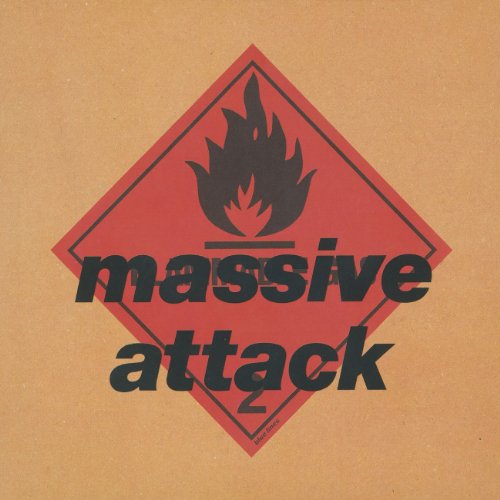
Massive Attack
Blue Lines: 2012 Mix/Master
Release Date: Nov 19, 2012
Genre(s): Trip-Hop
Record label: Virgin
Music Critic Score
How the Music Critic Score works
Buy Blue Lines: 2012 Mix/Master from Amazon
Album Review: Blue Lines: 2012 Mix/Master by Massive Attack
Fantastic, Based on 7 Critics
Based on rating 5/5
In 1988, now-defunct style magazine The Face dispatched a reporter to meet the Wild Bunch, a group of Bristol DJs and rappers who were local legends thanks to their parties, both legal and illegal. For a collective teetering on the brink of extinction – they would split up just after the article came out, torn apart by constant bickering and their own disorganisation – they were in remarkably bullish mood. They claimed to have invented a whole new genre of music they called "minimalist lover's hip-hop".
Based on rating 9.5/10
Seasons 4-8 of The Simpsons aside, it's hard to think of much from the '90s that has aged well: Britpop, Saved by the Bell, shell suits, and Liverpool Football Club have ignominiously slid from pop culture icons into figures of fun since the turn of the millennium; even the laugh track on Seinfeld sounds dated now. Trip-hop, the potpourri mashup of genres formed in Bristol, England at the start of the decade, is often mentioned in the same breath as the above; however this rerelease of Blue Lines, one of the defining works of the movement along with Portishead's Dummy, is the ultimate silencer to such glibness. .
Based on rating 9.0/10
We weren’t listening to Blue Lines in 1991. Whoever swears they were ahead of the curve and booming Blue Lines at its original summer release is either a veteran of the Bristol underground or an opportunistic liar. In August of ‘91 we still hadn’t heard the first rumbles of the Wild Bunch, nor could we place the names 3D or Daddy G or Tricky Kid or Shara Nelson.
Based on rating 9.0/10
Listening to Massive Attack's debut album, Blue Lines, 21 years after its initial release is like reading an old William Gibson novel that describes the then-near future, which is now the present, with unsettling precision. Nearly every song offers a sound currently in use in music's taste-making leading edge. Robert "3D" Del Naja's chopped-up vocals on the album-opening "Safe From Harm" sound freakishly like the chorus to Kanye et al's "Mercy" (even if Ye actually lifted it from DJ Screw, who was developing his idiosyncratic style 5,000 miles away from Bristol, England at almost the exact same time Massive were recording Blue Lines).
Based on rating A-
The trip itself matters far more than the destination. The same can be said for trip-hop, whether it’s the trance-inducing trip portion or the hop heightened by hips shaking. Take equal moving parts of downtempo electronica, jam-soaked dub, the gossamer pluckings of club sounds, and the slickest of hip-hop lyrics and splice that with ghostly nostalgia and an equally ghostly group of transients.
Based on rating 7/10
It is an undisputed cultural milestone. In 2003, Q magazine named it the tenth best British album ever. Among British albums of its era, only The Stone Roses’ self-titled debut has been more lauded. Yet, taken out of context 21 years after its release in June, 1991, how does Massive Attack’s Blue Lines hold up as music? Blue Lines is different from The Stone Roses or even other similarly celebrated British albums of the time such as Primal Scream’s Screamadelica and Happy Mondays’ Pills ‘n’ Thrills & Bellyaches, Blue Lines had nothing at all to do with rock’n'roll.
Opinion: Absolutly essential
The first masterpiece of what was only termed trip-hop much later, Blue Lines filtered American hip-hop through the lens of British club culture, a stylish, nocturnal sense of scene that encompassed music from rare groove to dub to dance. The album balances dark, diva-led club jams along the lines of Soul II Soul with some of the best British rap (vocals and production) heard up to that point, occasionally on the same track. The opener "Safe from Harm" is the best example, with diva vocalist Shara Nelson trading off lines with the group's own monotone (yet effective) rapping.
'Blue Lines: 2012 Mix/Master'
is available now

